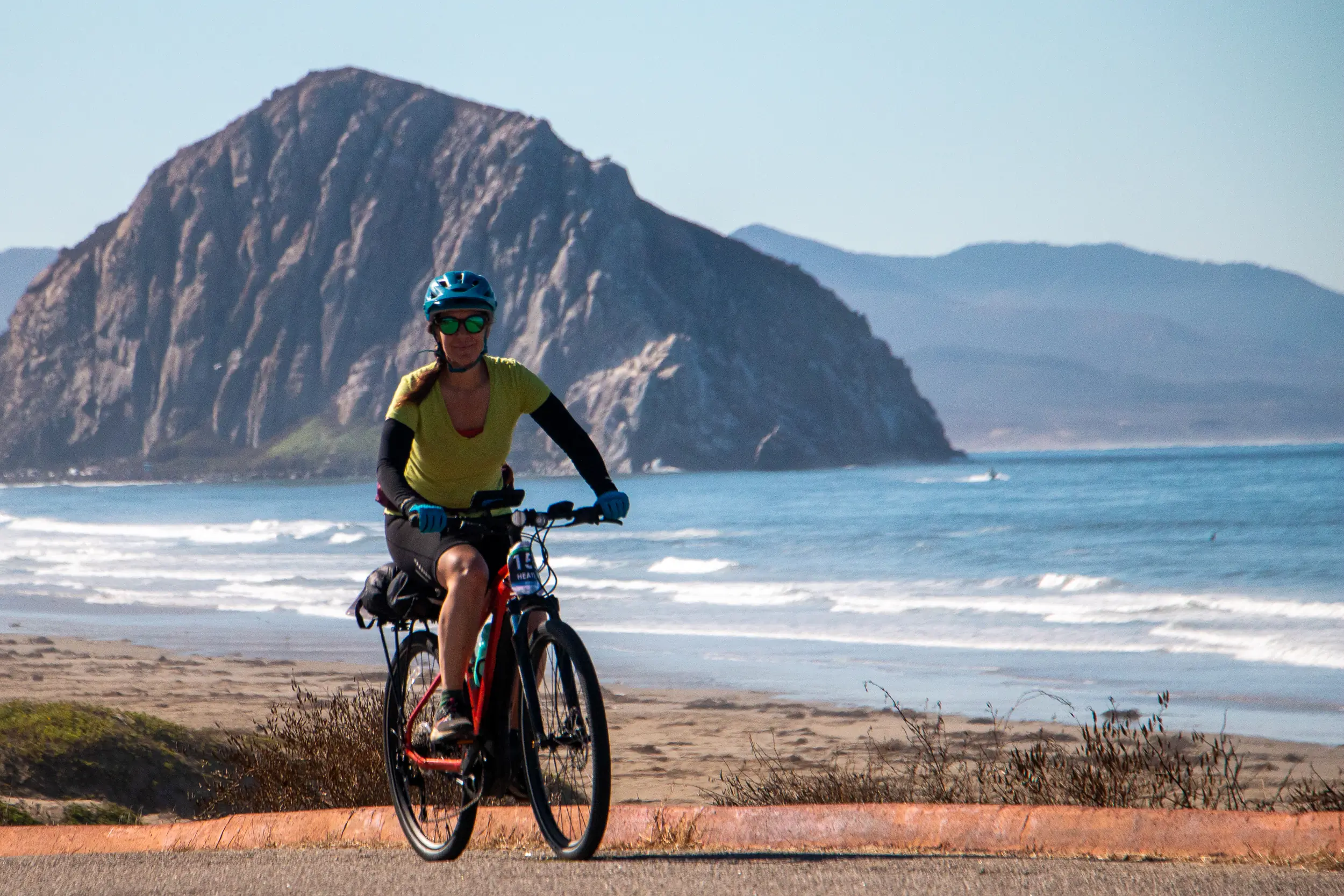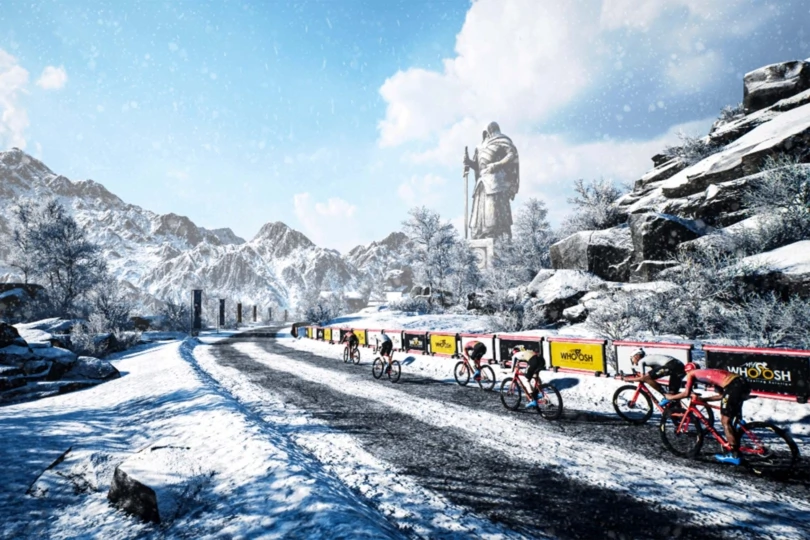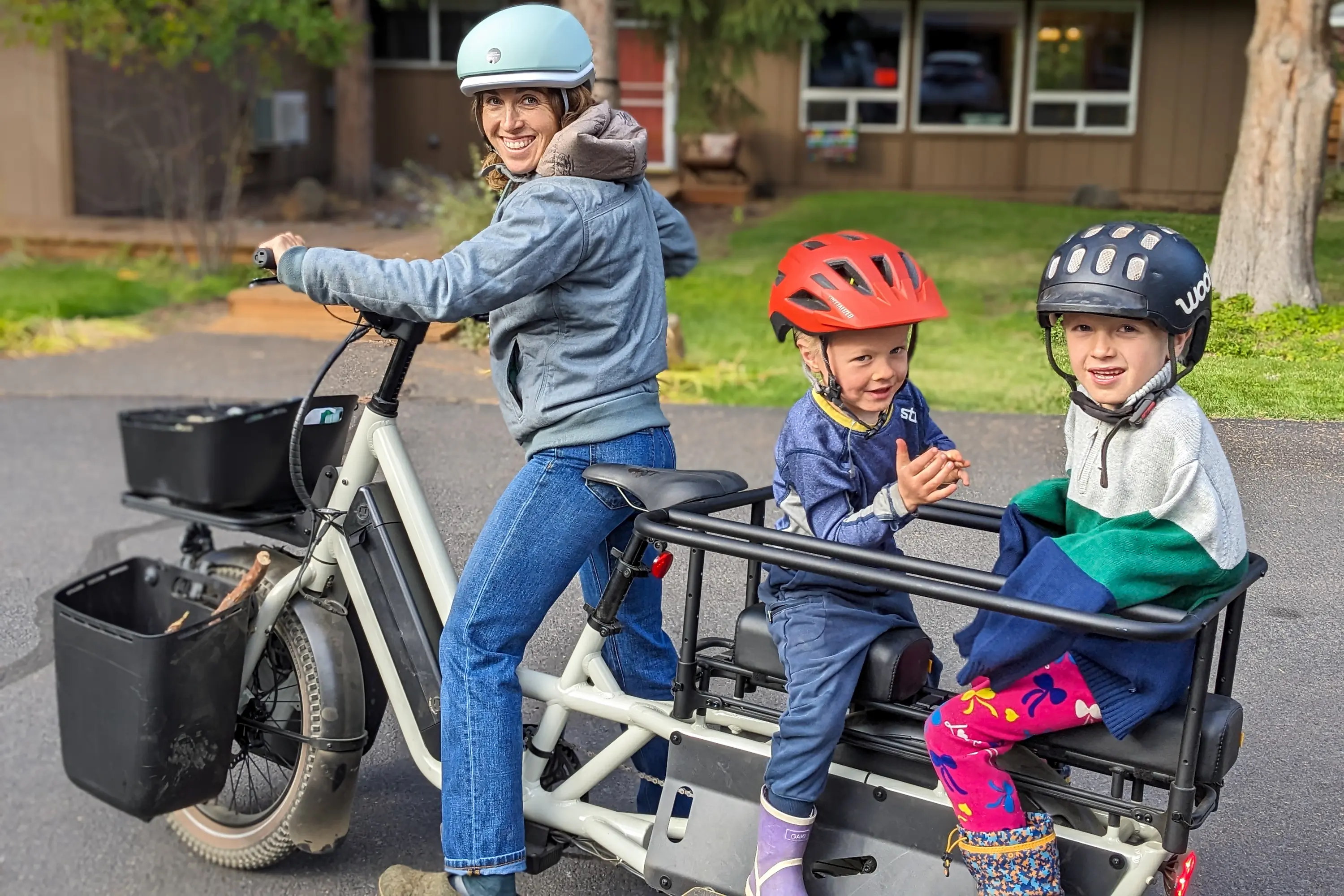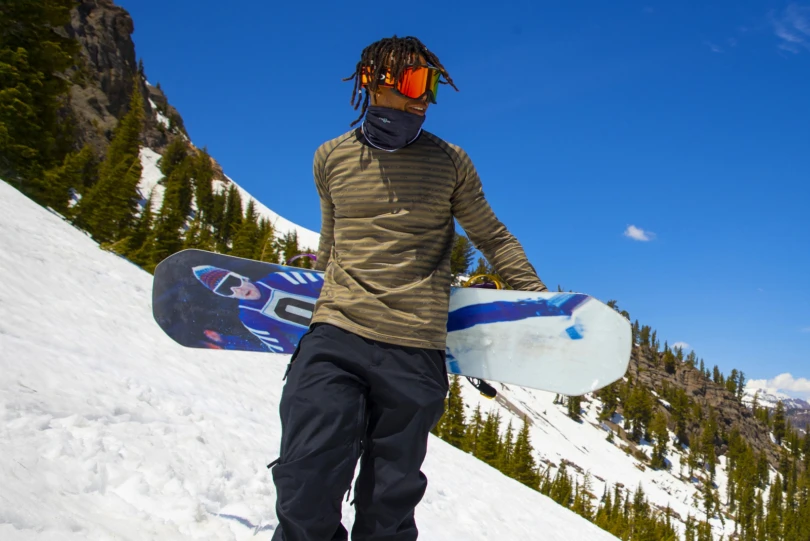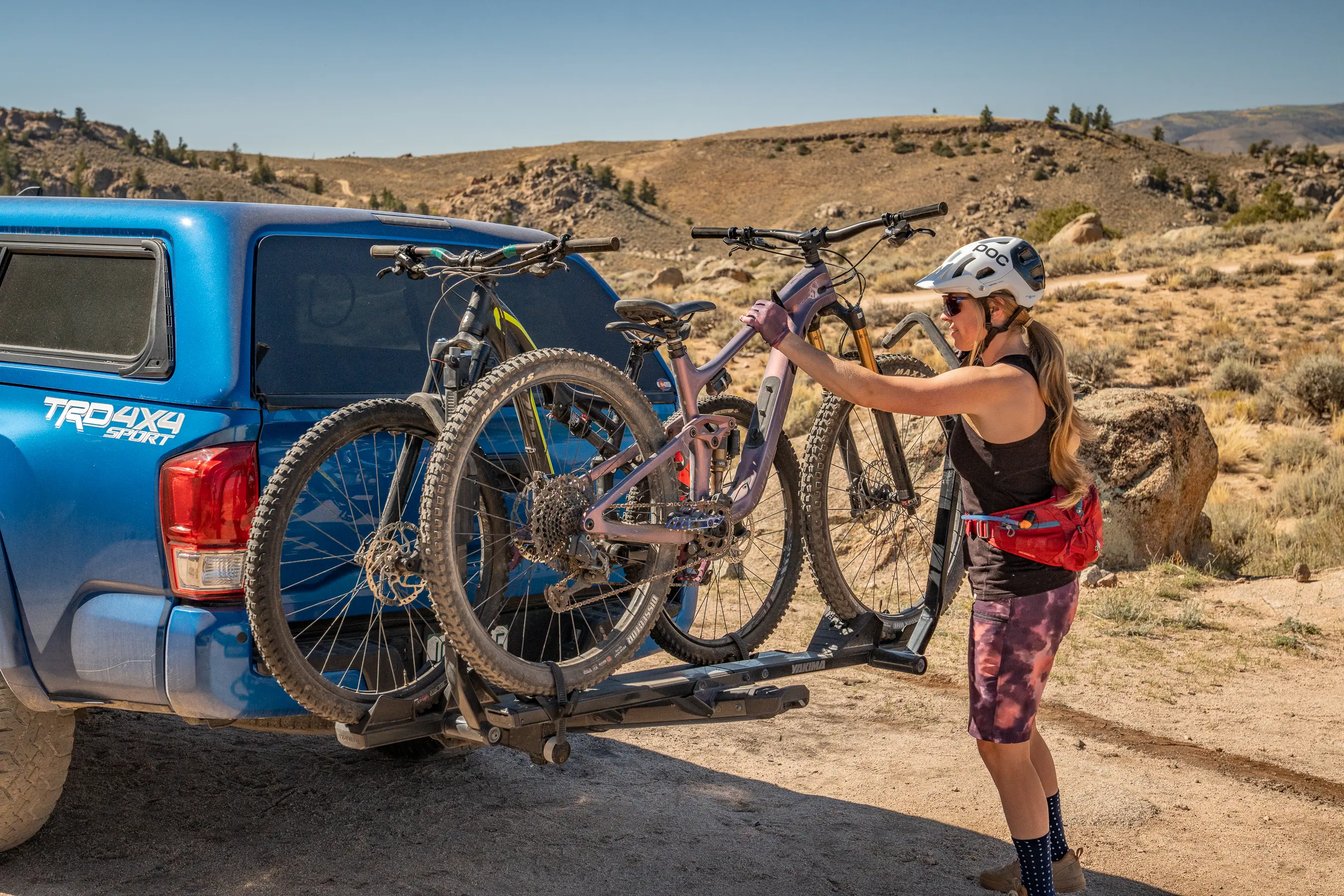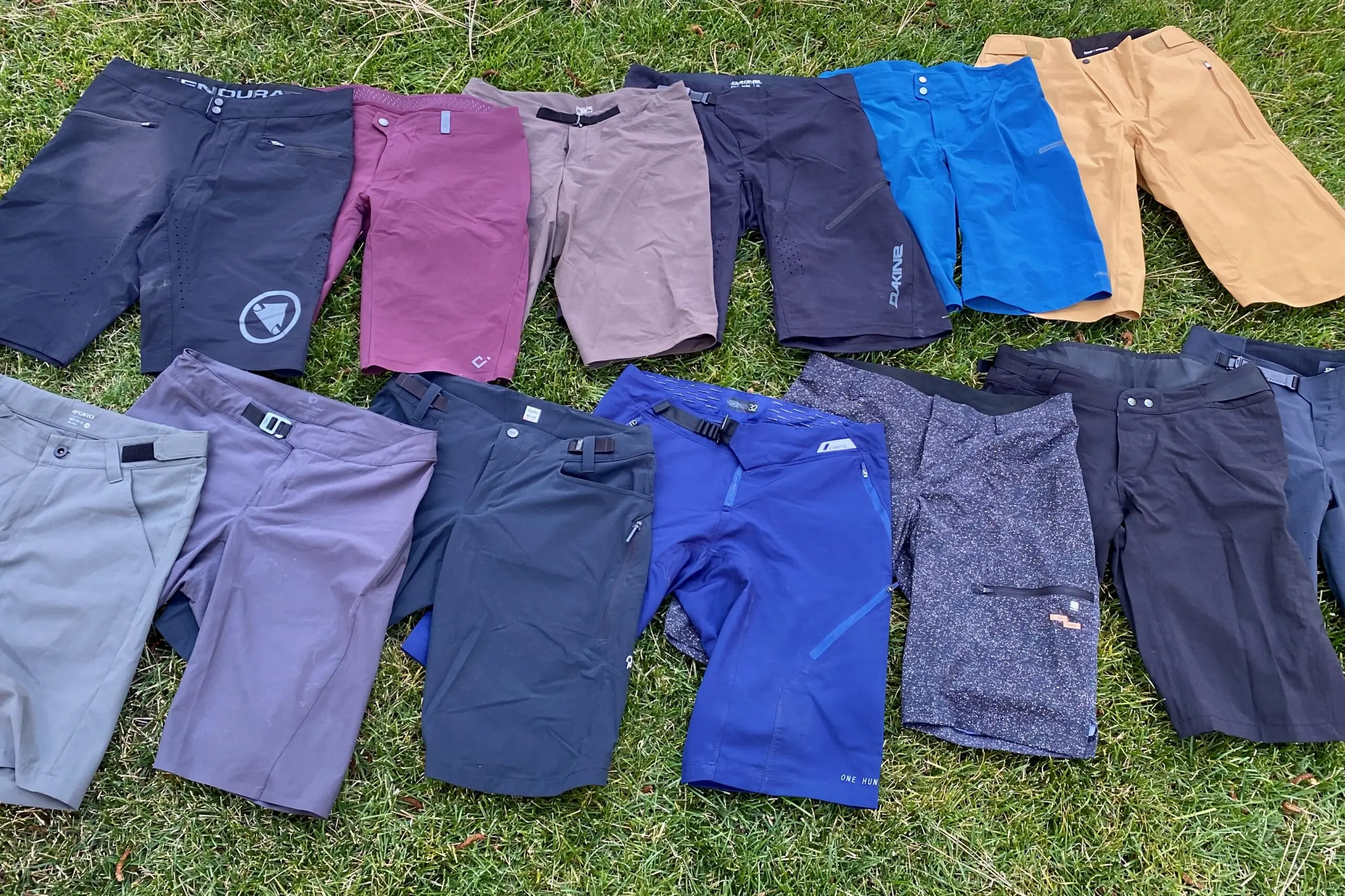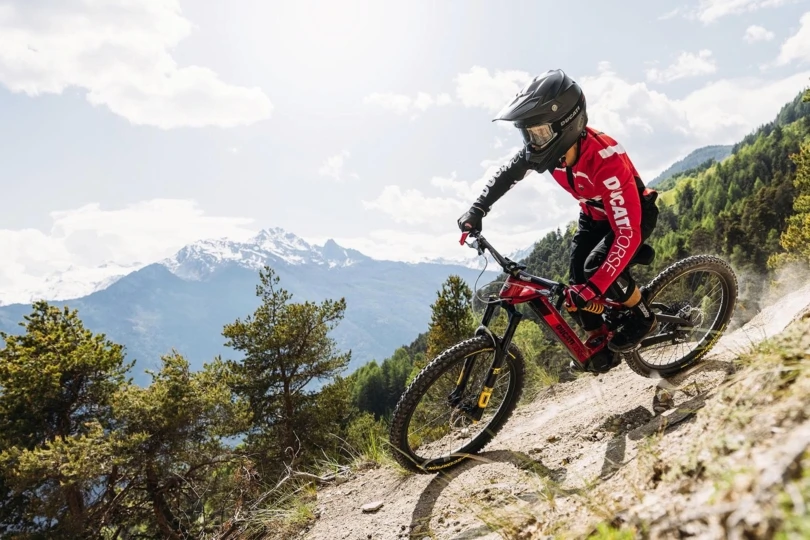San Francisco’s Fisherman’s Wharf is alive at 7 a.m. with 198 spandex-clad riders and what sounds like 10,000 cowbells. I throw a leg over my ride for the week — a Yamaha Cross Core RC e-bike — and follow a swarm of buzzing wheels toward the Golden Gate Bridge on the foggy horizon.
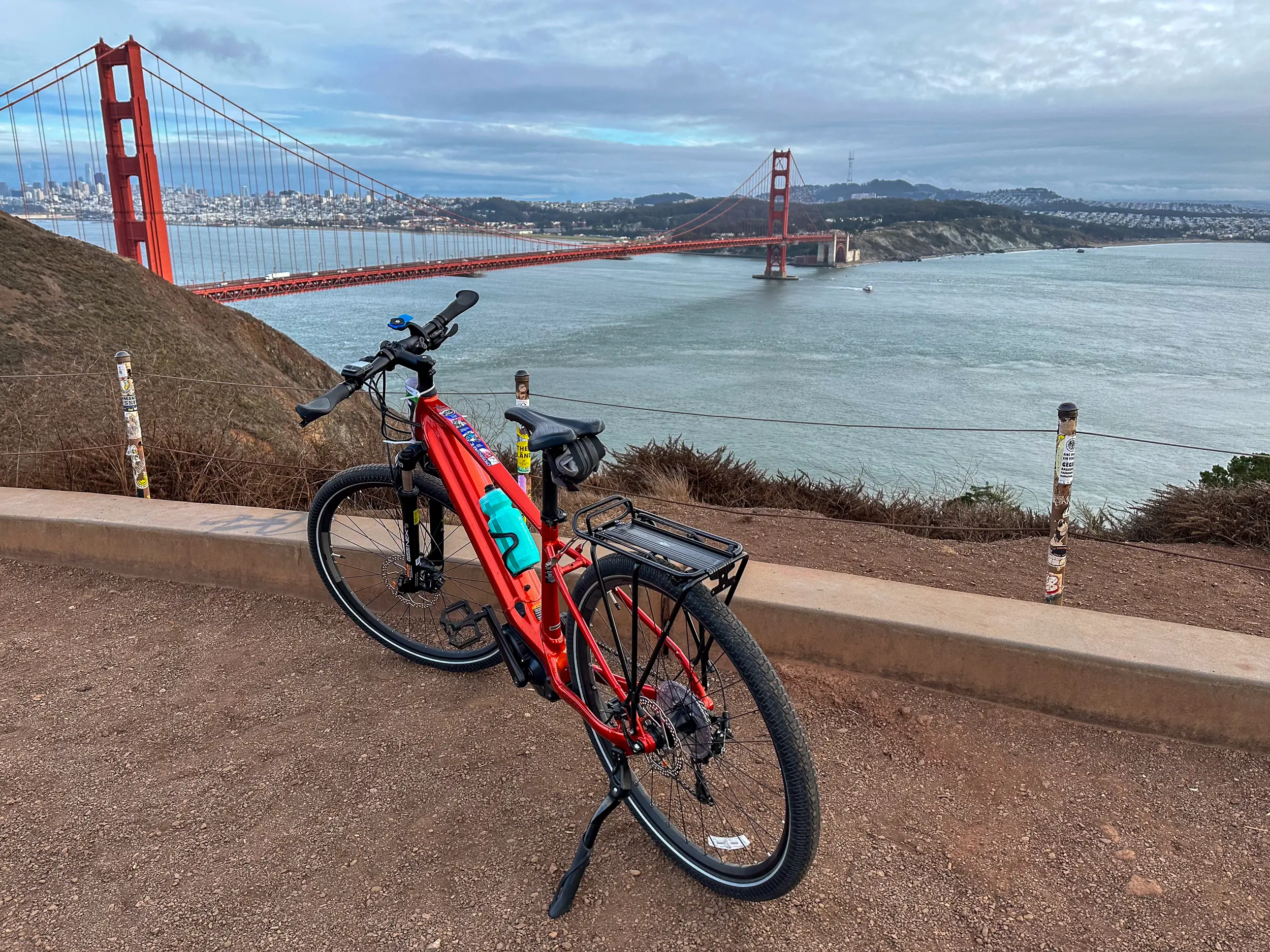
We’re all here for one reason: to ride from San Francisco to Los Angeles in an event organized by the Arthritis Foundation called the California Coast Classic. The tour — held yearly since 2000 — is to help find a cure for arthritis. Participants must raise over $3,000 to attend. Some have raised far more. The fundraising window closes on Nov. 1 and is expected to surpass $1.3 million.
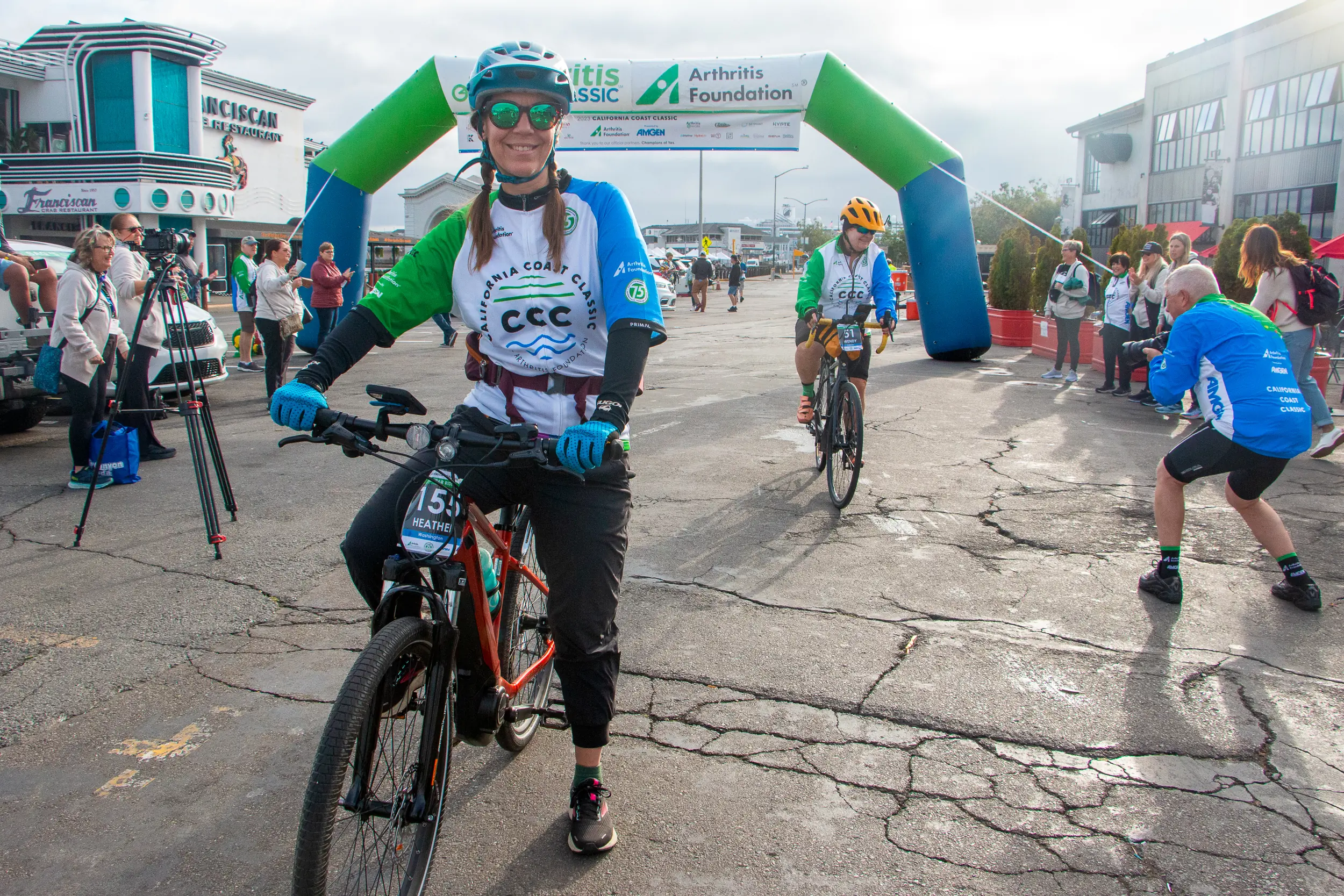
Before you think arthritis is just something old people get, I learned during the tour that arthritis can and does affect children and teenagers. Many of the California Coast Classic (CCC) honorees in 2023 were well under 50, and one was just 7 years old.
Yamaha Cross Core RC in the California Coast Classic
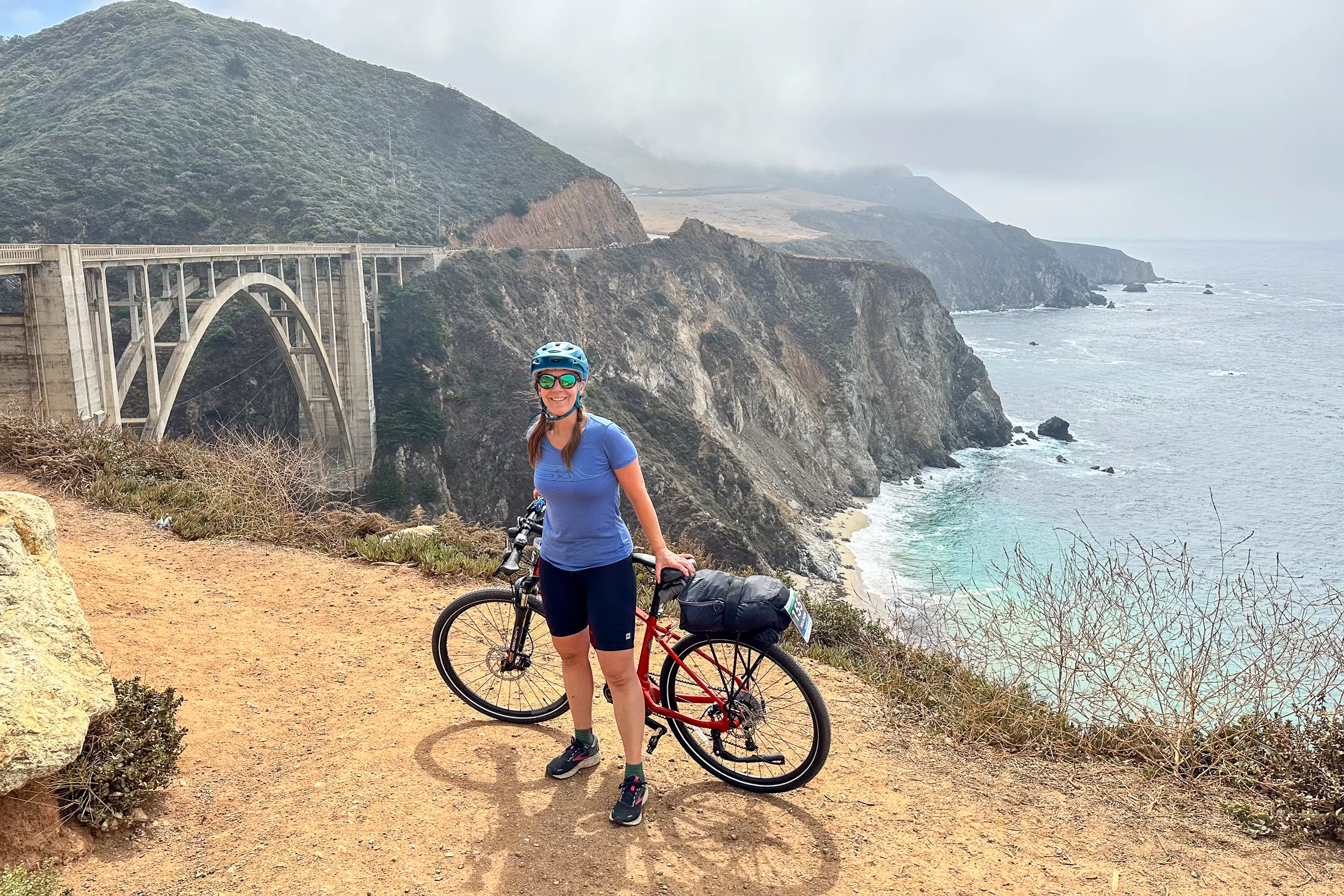



Because of the cause, electric bikes are permitted on the CCC, as many riders have arthritis and would not be able to ride a bike otherwise. I tested out the Yamaha Cross Core RC at home before committing to the 500-mile journey and am confident in the bike, having already ridden 75 miles on one charge.
But the true test comes on Day 1, when we leave San Francisco and ride 84.6 miles with 4,708 feet in elevation gain to Santa Cruz. The Cross Core takes me the distance smoothly, though I used more battery power than I did at home to save my energy for the long week ahead. I swap out the battery for a fresh one around 65 miles in — an easy process that takes 30 seconds — and continue.
Riding this e-bike was an absolute joy on steep hills, though I still worked hard. It’s pedal-assist, after all, not pedal-exempt. The harder I pushed, the more I felt the motor respond.
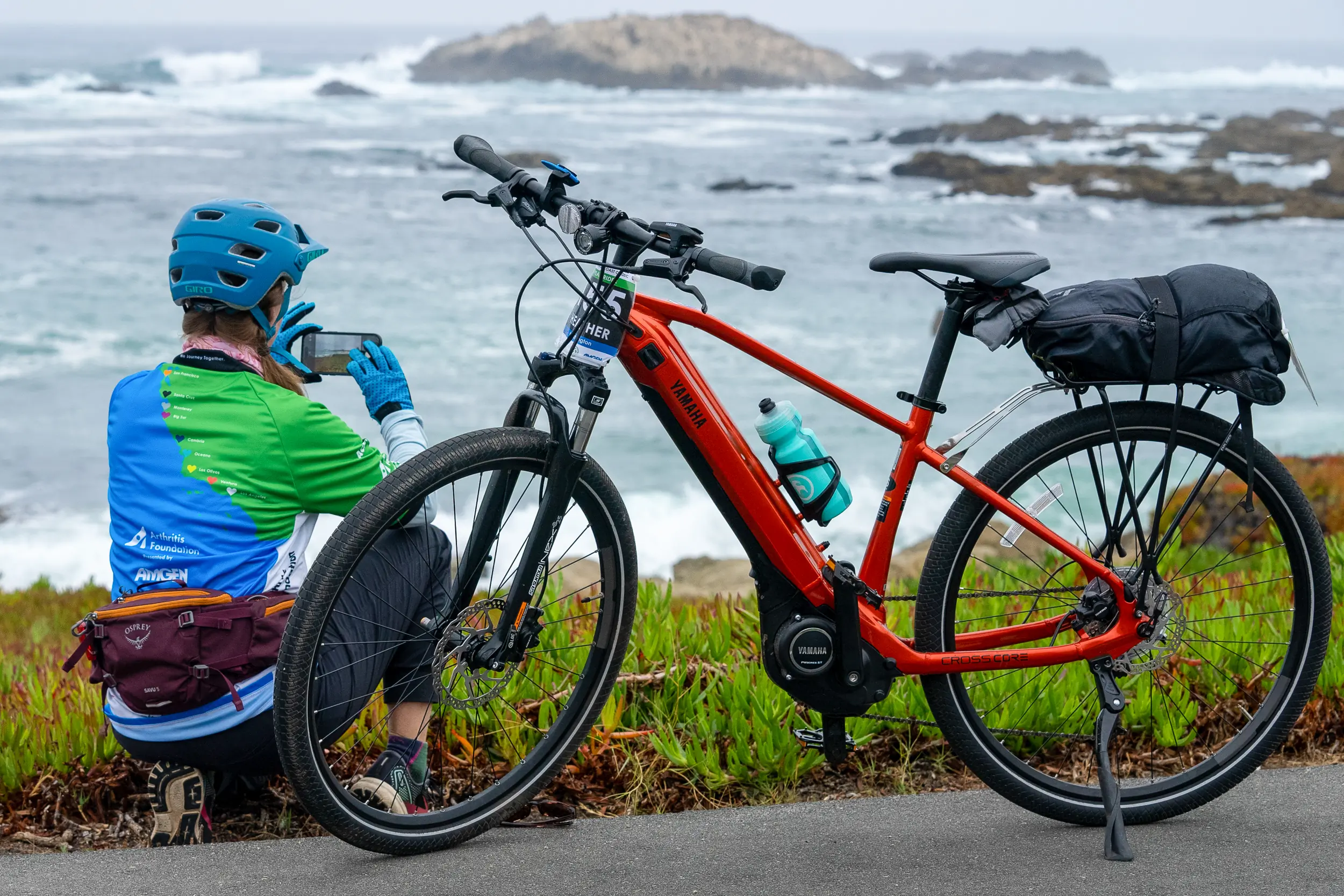



On an uphill, I passed 10, and then 20, and then 40 people. I felt a little guilty, but motor or not, I still needed to get 52.2 pounds to the top. In time, e-bikes will get lighter, but my legs acted as the throttle. Despite their soreness each morning, I was happy to focus on the glorious California scenery rather than wondering if I left half a lung on the hill behind me.
I had podcasts and playlists lined up to listen to on my journey. But on the first day, we had a safety talk. No earbuds. What am I going to do for 8 days without entertainment? This thought never surfaces again.
I forgot all about those greedy attention-grabbers. Instead, I watched farmers working the land. I took deep breaths and smelled the eucalyptus trees and green and red peppers. I tasted the sea salt on my upper lip and stopped to touch succulents sprouting along the ground.
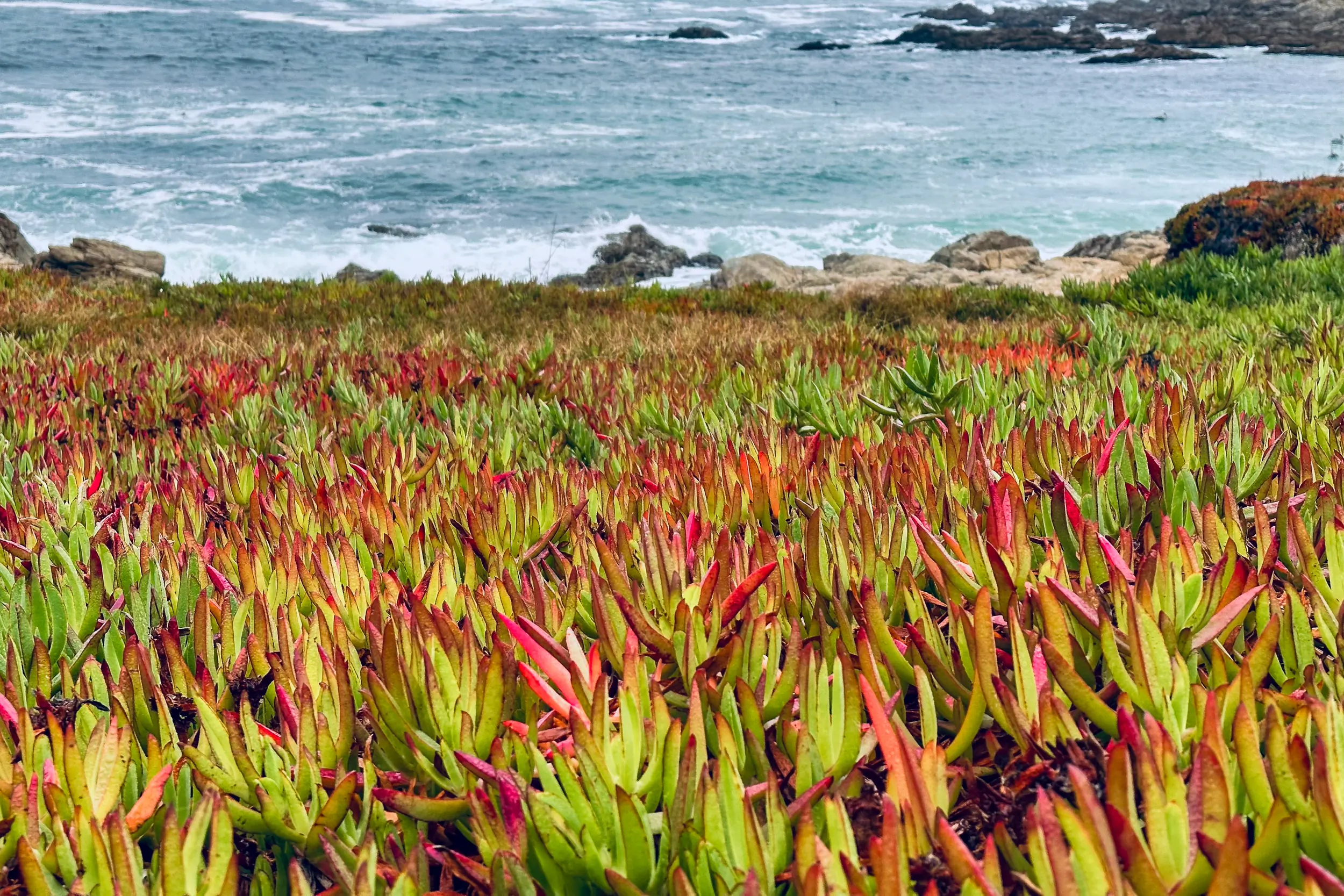



Traffic was sometimes irritating or scary, especially as we got closer to L.A. My ears were tuned for the sound of vehicle tires going over the rumble strips in the center lane, which indicated they gave me room. Most motorists seemed aware of the few hundred of us riding along the shoulders.
Not all CCC participants liked the e-bikes. I noticed this when I passed someone working hard to get up something steep, and I greeted them but got no reply. My cheery “Hello!” and ding-ding of my bell alerting my pass may have annoyed some throughout the week. Fair enough. But I intended to be polite and not perpetuate the stigma that e-bikers are jerks blasting by other riders and pedestrians. I didn’t want to receive the “e-bike salute” (middle finger).
The Reality of Long-Distance E-Biking
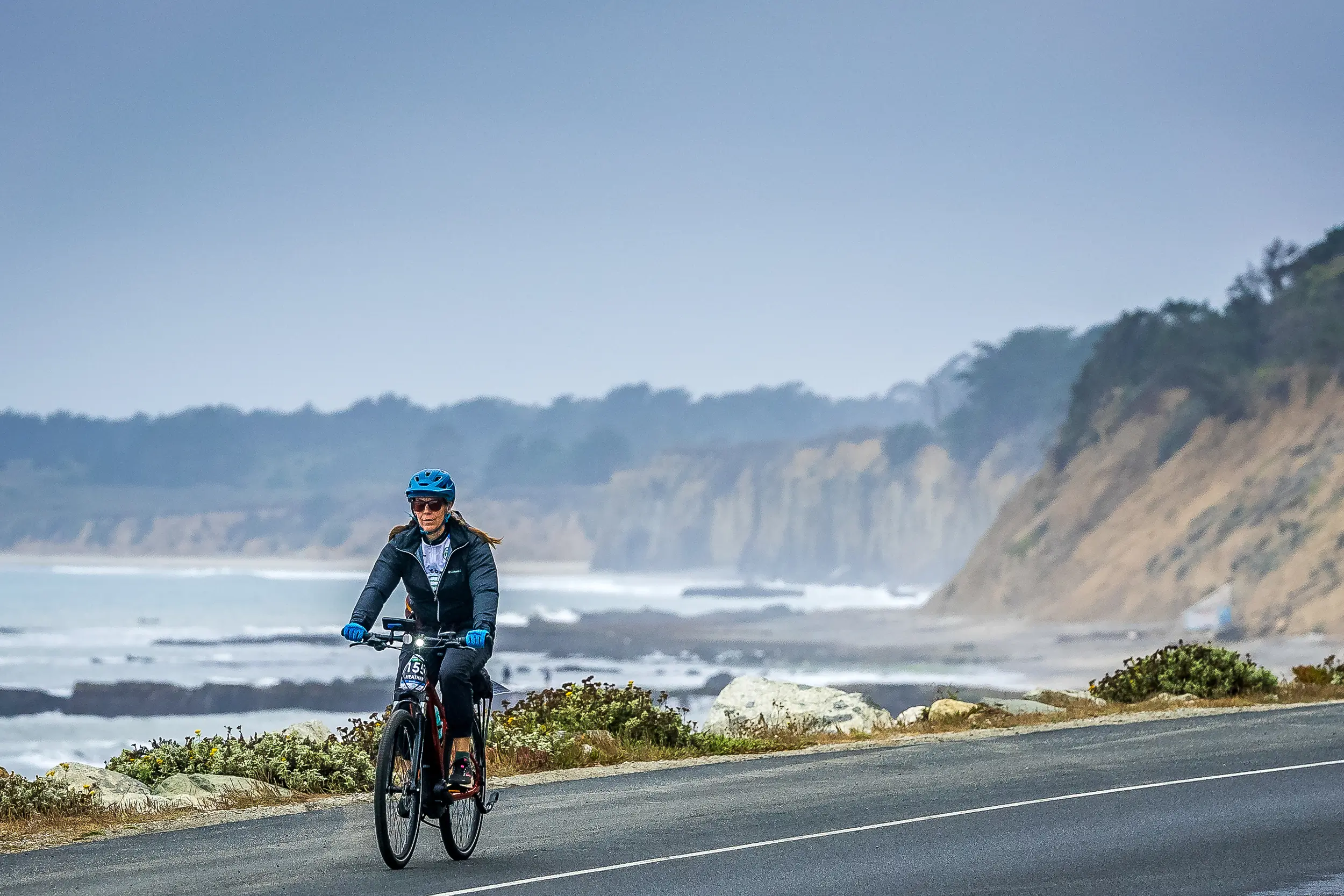



The days delightfully rolled into each other: “What night did we stay at Big Sur Lodge?” “Was that insane headwind this morning or yesterday?”
The California Coast Classic’s 24,000-plus feet of elevation gain became noticeable mid-week. Most CCC riders finished later in the afternoon, and some rolled in just before sunset. There was little in the way of ego, attitude, or competition, and therefore, no stress. Just be home by dark. We couldn’t wait for happy hour, hot showers, a delicious meal, and perhaps a recovery massage.
I felt like Wonder Woman the first 5 days, but I still added massage and stretching to my nightly routine. On Day 6, I started feeling the deep bone bruises on my sit bones that not even the plushest saddle in the world could fix.
That said, huge kudos to whoever designed the Cross Core’s saddle. I fully expected to replace it with my saddle from home. But I didn’t have to. Same with the pedals. They were wide enough for all-day comfort, and the balls of my feet were never numb or sore.
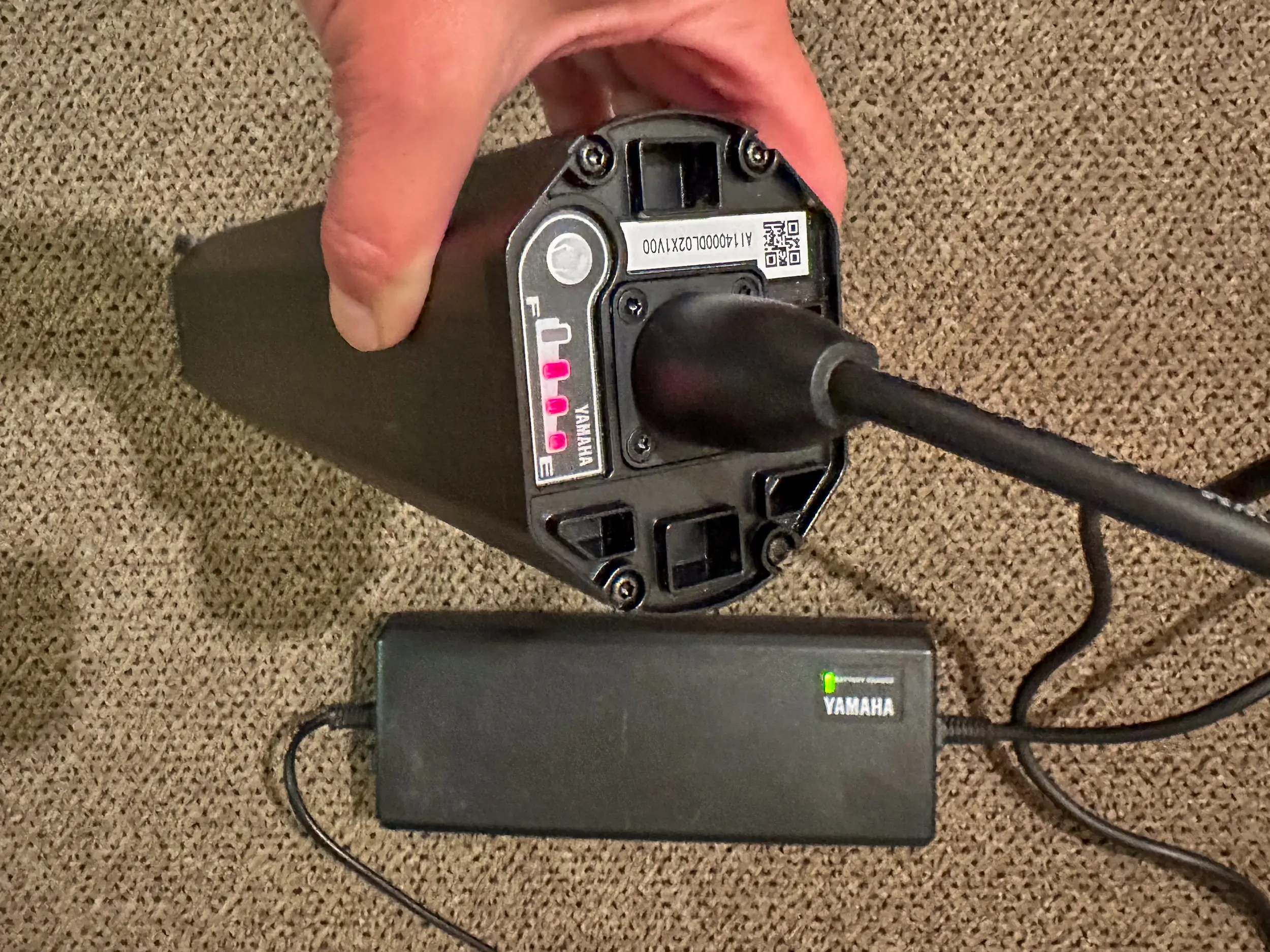



As for battery charging and capacity, one sat in the chamber, and the other was strapped to the bike rack. Each 500Wh 36V battery weighs 6 pounds and took roughly 4 hours each to charge. In my hotel, I removed two chargers from my luggage and plugged them in so they were topped up for the next day’s 46 miles and 4,000 feet of elevation. The extra weight of two batteries and chargers is considerable but only noticeable when I hauled my bags to my room at the end of a long day.
I never once relied on roadside charging. As mentioned, I rode 75 miles on one charge during a training ride at home, with over 3,000 feet of elevation gain. Once on the CCC, I wanted to conserve my energy, so I used the second battery almost daily.
Yamaha Cross Core RC E-Bike: The Real Deal?
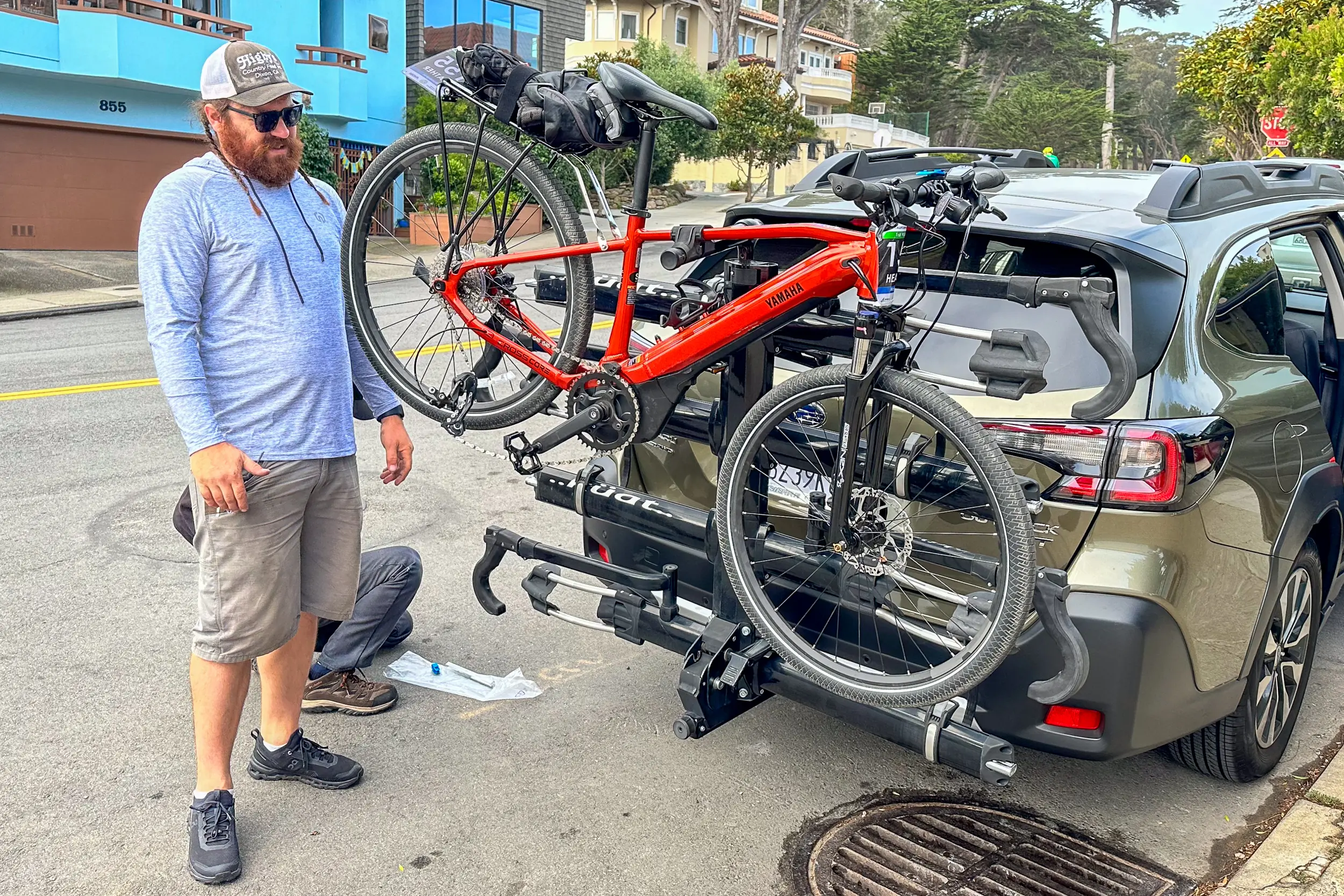



Yamaha Motor pioneered the first e-bike in 1993. Three decades later, I’ve reaped the rewards of a well-oiled machine. There are no cheap Chinese knockoff parts here.
This integrity is most evident as the week carries on, and one by one, those who’ve rented e-bikes for the CCC are calling the sag vehicles for a pickup. One rider jokingly referred to himself as the power-assist and had to keep his e-bike on its lowest setting the entire week due to insufficient battery power.
The Cross Core RC is a Class 1 e-bike with pedal assist to 28 mph. If you look under the specifications on Yamaha’s website, the RC’s suggested use is “casual pavement adventure.” Overall, this e-bike did an excellent job doing something it wasn’t purposely designed to do.
I had the choice to use a more road-specific e-bike from Yamaha but opted for the Cross Core RC for its upright position due to neck and shoulder issues. Yamaha does have an impressive selection of e-bikes — from commuters to all-roaders to mountain bikes.
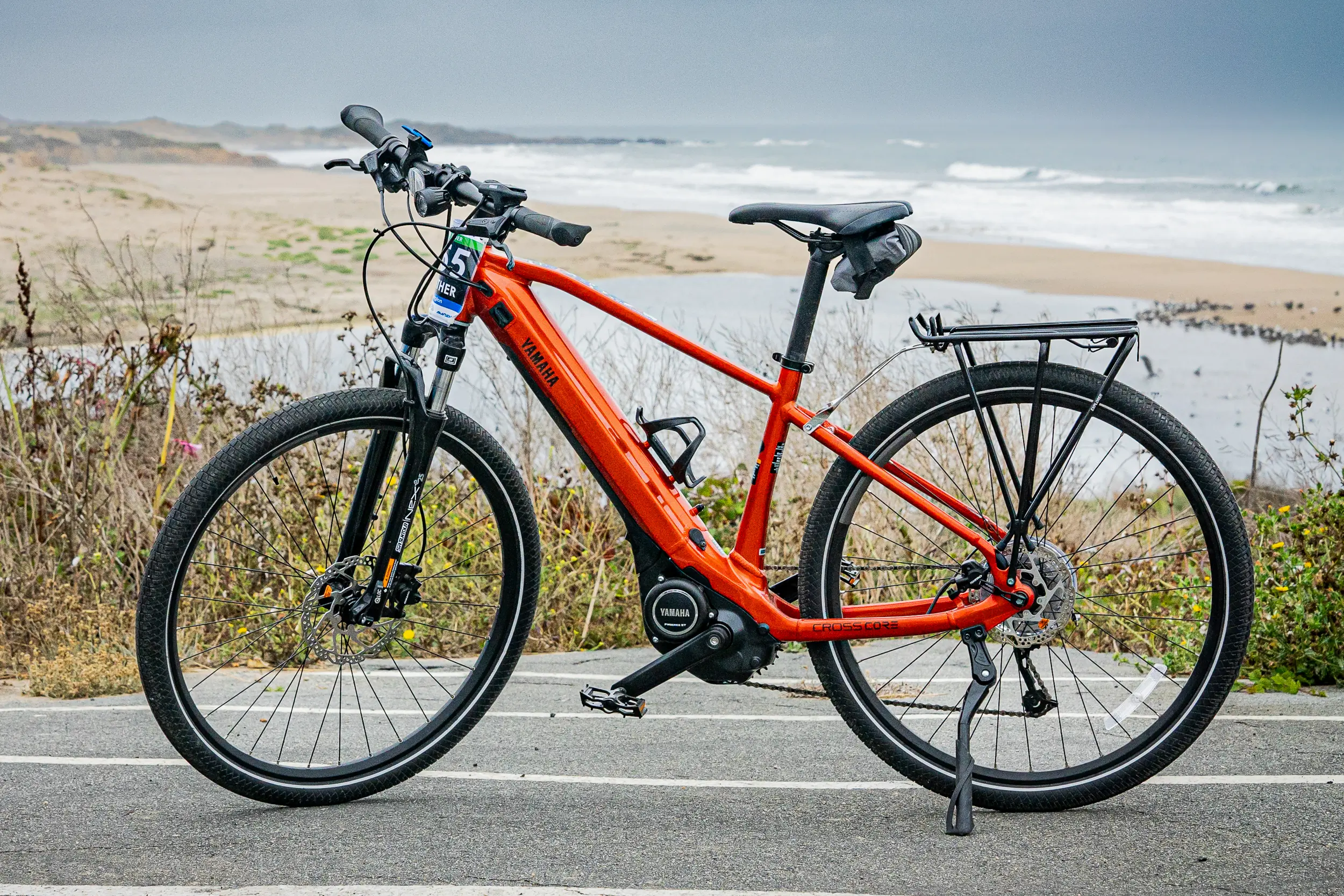



My most challenging mechanical issue was three flat tires in 24 hours. One flat was pretty much a given riding on paved shoulders. I can’t count the number of times I had to weave through glass and other road debris. Twice was unlucky. But three flats required an alternative.
Luckily, Yamaha supplied a replica of the Cross Core RC to follow me in case anything went wrong. My go-to mechanic, Jamaica, swapped the rear wheels, and I never had another issue.
One complaint about the RC: I wished it had a USB charging port for my phone. I followed the preprogrammed CCC route provided by the Arthritis Foundation on a free app called Ride with GPS. Using turn-by-turn directions meant my screen was constantly on, a huge battery drain.
I had to keep it turned off, which resulted in a few missed turns. Plus, with all that epic coastal scenery, I was filming and taking many photos. It was more of a challenge to keep my phone charged than the bike itself.
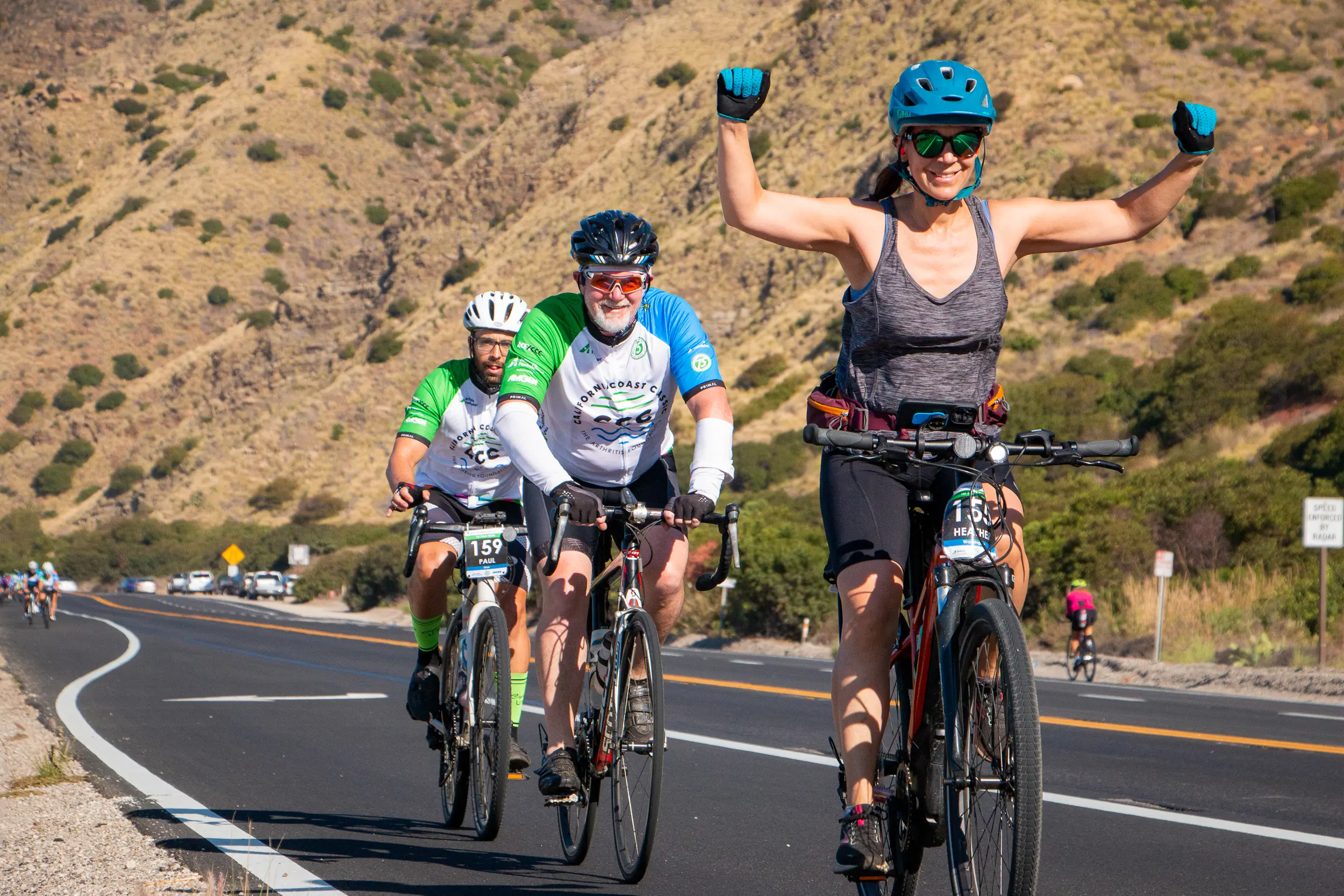



The burnt-orange Yamaha Cross Core RC impressed some of the other riders. By mid-week, I fielded questions about how well it retained battery power, how comfortable it was (one guy asked me if I was on the mountain bike, perhaps noticing the 63 mm of travel suspension), and where it could be purchased. I even had a conga line of riders drafting me on windy days and up hills. “How do you like me now?” I jokingly called out.
After more than 500 miles, there was no apparent wear on the tires, brakes, or any other Yamaha Cross Core RC component. I didn’t lubricate the chain once. The side stand did regularly wobble loose and needed a few adjustments. Otherwise, I detected no other issues in the frame after 500 miles over some fairly rough roads filled with potholes and broken pavement.
Yamaha’s Cross Core RC would make a comfortable work commuter, but it can also haul you for long-distance adventures.
How to Do the California Coast Classic (Arthritis Not Required)
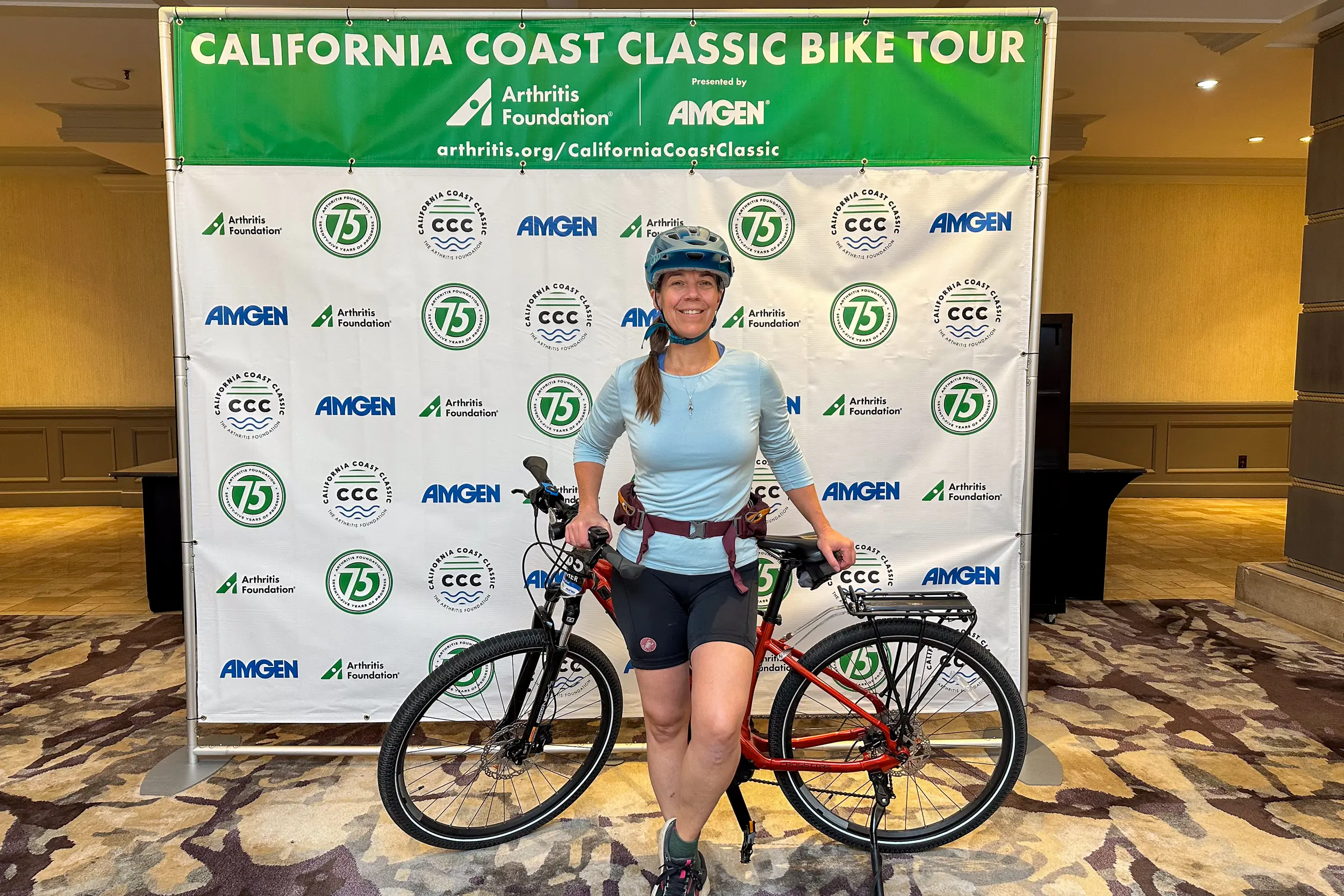



The California Coast Classic is an iconic bike tour on many road riders’ bucket lists. Some start training months in advance; others, like me, jump on a few weeks beforehand and hope for the best. It is available to anyone and everyone. And no, you don’t need arthritis to join, but many CCC riders suffer from the affliction.
Half a dozen sag vehicles were on hand to pick up anyone feeling low energy and needing a lift to the top of a hill. Again, there was no judgment. I never knew who got helped along the way and who was an EFI’er (Every F’ing Inch).
The ride days were relaxed and well-organized. Of course, we all loved the rest stops filled with energizing drinks and snacks, usually about every 25 miles or more frequently on longer days or those with a lot of elevation.
The catering team never ran out of delicious food, and the options were plentiful, with more than one protein and considerations to food allergies, like gluten and dairy. Although we rode over 500 miles, I doubt anyone lost weight that week — the meals were too good.
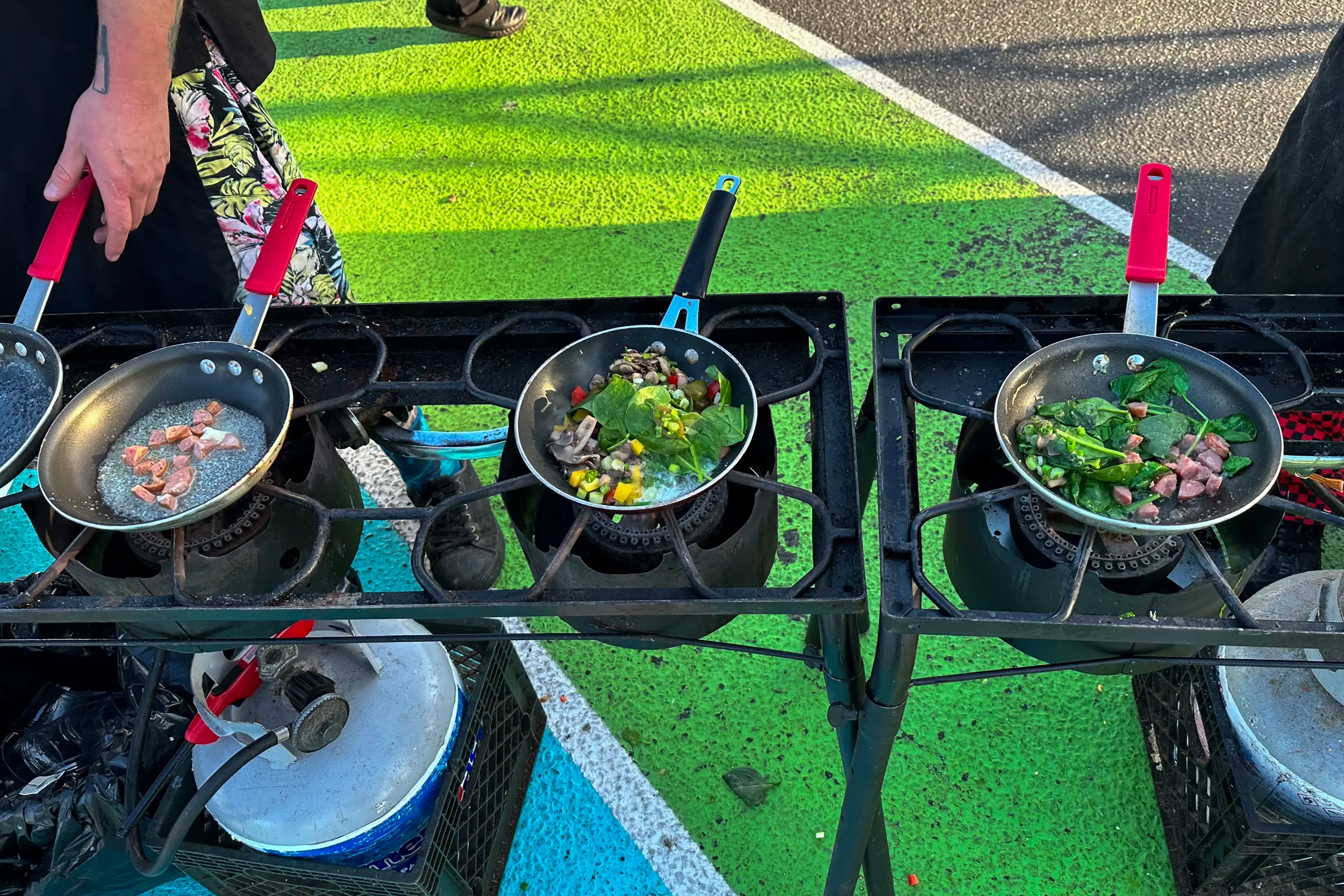



To join the CCC as a new rider, you’ll need to raise $3,500. Returning riders are required to raise $3,200. A one-time registration fee of $95 applies to new riders (see promo code below), and returning riders pay $55.
Once you’ve signed up for the California Coast Classic, you’ll receive the Arthritis Foundation’s regular newsletters filled with how-to-train info, links to the “What Are We Riding For?” podcast, and other inspirational materials.
When riders get closer to the starting date in San Francisco, a detailed packing list is emailed out, along with GPS route info supplied by Cadence Sports and the daily arthritis honorees. The sellout number of riders each year is 250. This is due to group caps riding through Big Sur.
Other rides, such as AIDS/Lifecycle that offer trans-California routes, cannot take their groups on the coast and instead have to route inland for the days that CCC stays along Highway 1 — namely, Days 3 and 4.
Camping accommodations are included in the registration fee, as are meals. If riders opt to stay in hotels, the cost of the room is the riders’ responsibility. Notably, CCC organizers offer free shuttles to camp and free luggage service to and from official tour hotels. CCC also allows riders to customize the number of nights they stay in hotels and a mix of camping and hotels. Hotel discounts also apply.
The Ride with GPS app supplied by Cadence Sports gives riders the freedom to ride at a comfortable pace, informing how many miles until the next rest stop, along with statistics like moving time, max speed, average speed, elevation loss and gain, both up and down, hours of moving time, and much more.
2023 California Coast Classic Itinerary
- Day 0: Registration in San Francisco
- Day 1: San Francisco to Santa Cruz; 83.6 miles and 4,924′ of climbing
- Day 2: Santa Cruz to Monterey; 57.2 miles and 2,692′ of climbing
- Day 3: Monterey to Big Sur; 47.3 miles and 3,013′ of climbing
- Day 4: Paso Robles to Cambria; 46.5 miles and 4,027′ of climbing (route diversion due to landslide)
- Day 5: Cambria to Oceano; 56.7 miles and 2,059′ of climbing
- Day 6: Oceano to Los Olivos; 61.5 miles and 3,311′ of climbing
- Day 7: Los Olivos to Ventura; 88.7 miles and 3,042′ of climbing
- Day 8: Ventura to Los Angeles; 60.4 miles and 1,691′ of climbing
The 2024 route will return to the coast, and Day 4 will be Big Sur to Cambria — typically 72.8 miles and 6,090 feet of climbing.
To sign up for the California Coast Classic 2024. or to hear and read more about past rides, participants, and honorees, visit the CCC website.
From now until Oct. 31, 2024, registration is discounted. Use promo code EVENT24 for $15 off. (Registration is $95, drops to $80.)
How to Find a Yamaha Cross Core RC
The Cross Core RC retails for $2,999 with three color options. Purchases can be made online or at a retailer.
